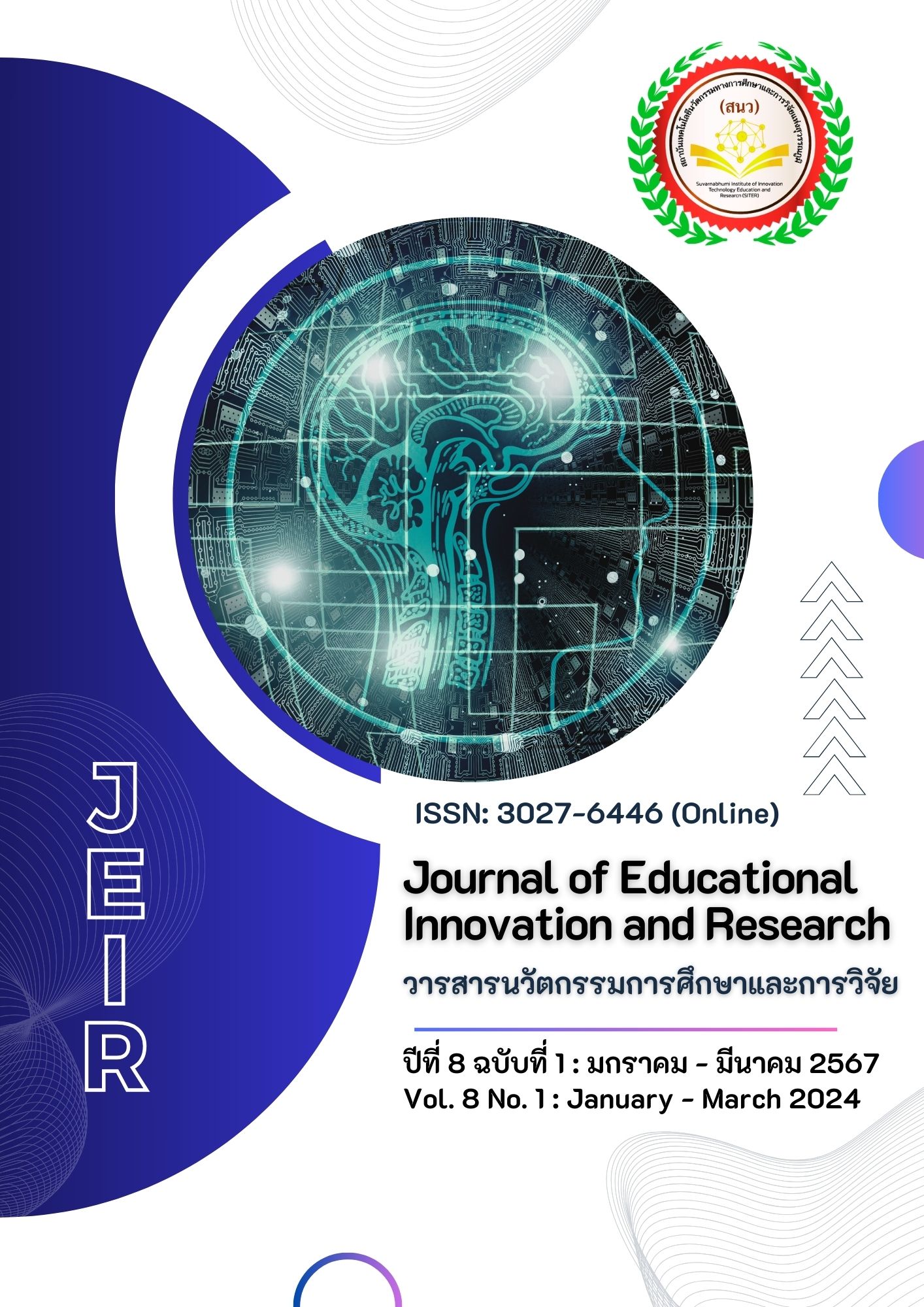A development of online lesson for Chinese language teacher by using task-based learning in high school of western region
Main Article Content
Abstract
This Article aimed to develop (1) an online lesson and (2) designing skill for content in online lesson of Chinese language teacher in high school of western region. This research was the usage of a qualitative method and using the concept of task-based learning as a research framework. The sample was 20 Chinese language teachers in high schools in western region acquired by the purposive sampling. The experts evaluated the efficiency of Chinese language content and production technique, and the sample designed Chinese lesson content. The research data were analyzed by mean percentage and grouping method.
The research results were found as follows;
1. An online lesson for Chinese language teacher by using task-based learning was appropriate at a very good level, and the format of an online lesson can be extracted including teacher manual, vocabulary, main lesson, sub-task and main-task.
2. A skill in designing task of lesson contents was appropriate at a good level, consisting of 6 skills: 1) writing content 2) determining learning outcomes 3) determining language focus 4) determining activities in line with teaching methods 5) assigning tasks in line with teaching methods 6) designing tasks’ evaluation methods, and the designed contents including a total of 13 functional items, 22 sentence patterns.
Article Details

This work is licensed under a Creative Commons Attribution-NonCommercial-NoDerivatives 4.0 International License.
References
Ellis, R. (2003). Task-Based Language Learning and Teaching. Oxford: Oxford University Press.
Guo P.J. (2014). How video production affects student engagement: an empirical study of MOOC videos. Proceedings of the first ACM conference on Learning @ scale conference. https://dl.acm.org/doi/ 10.1145/2556325.2566239
Kaemmanee, T. (2007). Teaching method: knowledge for an effective learning management (2nd ed.). Bangkok: Chulalongkorn University Books.
Klinhom, N., Moolmee, K. & Inprasitha W. (2017). Development of grade 11 students’ Chinese speaking skills using TBL (task-based learning). Khon Kaen University Journal, 40(2), 73-79.
Li, Q. (2006). Curriculum, syllabus and teaching method of Teaching Chinese to foreign. Beijing: Shangwu Press.
Nunan, D. (2004). Task-based language teaching. Cambridge: Cambridge University Press.
Office of Guojia Hanyu Jiaoxue. (2002). Chinses syllabus for foreign students. Beijing: Beijing Language University Press.
Sanguannuan, K. (2003). A study of curriculum implementation of foreign language learning strand (Chinese) in schools under the Bangkok metropolitan Administration (Master Dissertation). Chulalongkorn University.
Sankaburanurak, S. (2016). A development of task-based teaching model to promote Chinese reading comprehension ability for undergraduate students (Doctoral Dissertation). Silpakorn University, Nakhon Pathom.
Sankaburanurak, S. (2017). Chinese language teaching management through task-based. Panyapiwat Journal, 9(Special edition), 260-271.
Skinner, B. F. (1954). The science of learning and the art of teaching. Harvard educational review, 24, 86–97.
Srirasa, Y. (2018). Communicative language teaching (CLT) management with mixed media to promote Chinese speaking skills for Mayhayon Suksa 2 students. Mahasarakam University Journal, 24(1),1-12.
Sriyanluck, K., Leepiyachart, N., Mahakhan, N., Limthawaranan, W., Arthornthurasuk, P., Jitpenthomkim U., Sa-nguansri T., Saroj K., Larprungruang S. & Maneelarp D. (2011). Satisfaction study of e-learning lessons of Korean, Chinese and Japanese courses 1. Burapa University Journal, 19(31), 105-121.
Theeravit, K. (2008). Teaching Chinese language in Thailand at elementary and high school levels (Research report). Chulalongkorn University.
Thorndike, E. L. (1905). The elements of psychology. A G Seiler. https://doi.org/10.1037/10881-000
Tonsalee, S. (2018). Functional items and sentence patterns using in Chinese for tourism and hotel courses in Thailand. Proceedings of SMARTS 8, Nakhon Pathom Rajabhat University. June 22, 502-509.
Wilkins, D.A. (1976). Notional syllabuses: a taxonomy and its relevance to foreign language curriculum development. Oxford: Oxford University Press.
Willis, D., & Willis, J. (2007). Doing Task-Based Teaching. Oxford: Oxford University Press.
Willis, J. (1996). A Framework for Task-Based Learning. Harlow: Longman.
Zhu, Z., Fu, X. & Li, C. (2014). Golden Chinese Communicative sentence 65. Beijing: Shijie Tushu Press.

